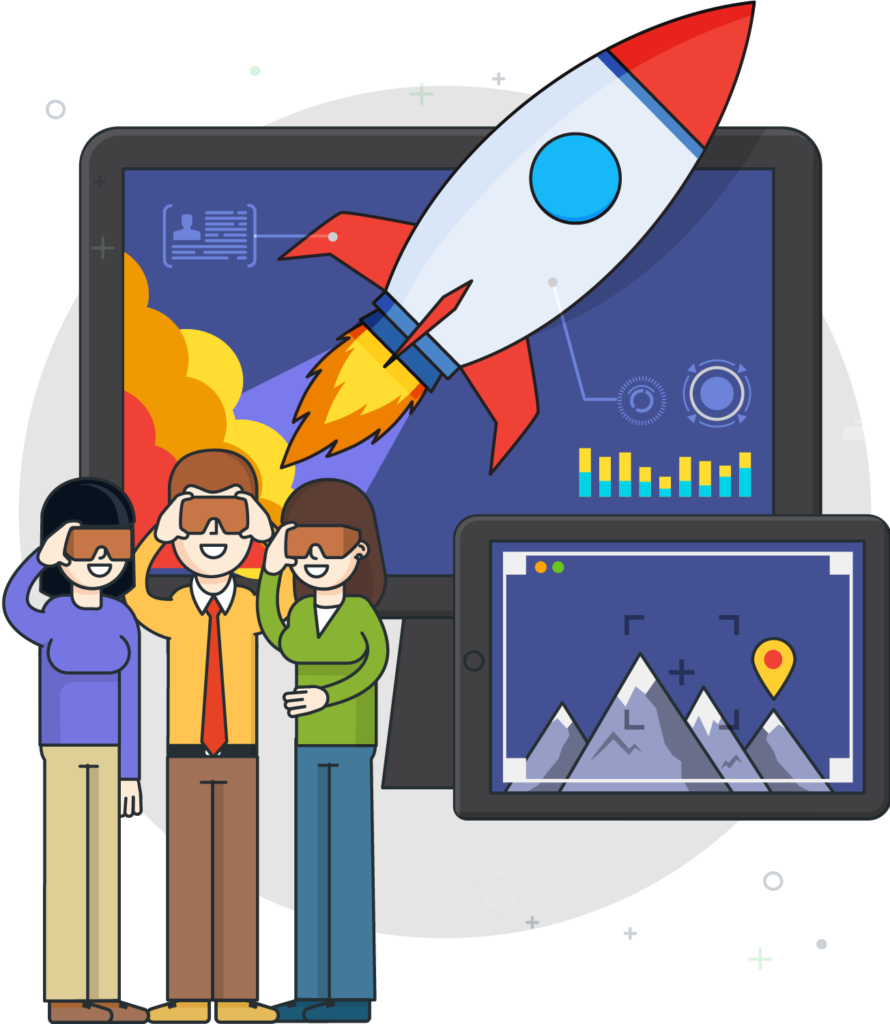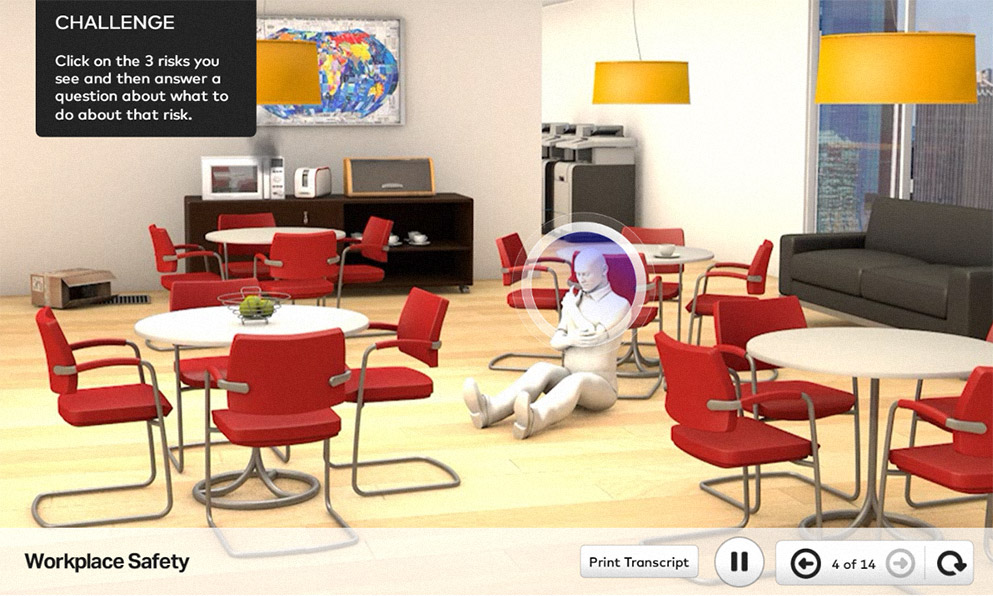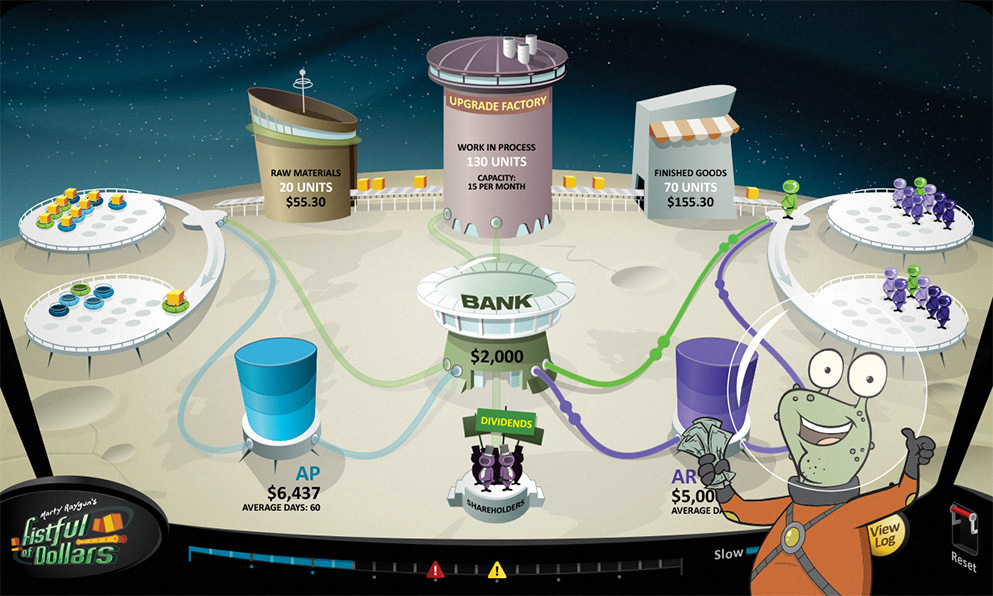
Simulated Learning Environments
Develop new competencies without boring your employees to death by using Simulated Learning Environments.
Our innovative approach ensures learners practice and learn from their mistakes while enjoying an engaging and interactive learning experience.
Why Simulators?
Simulations attempt to recreate, in a true-to-life way, real situations applicable to any field of knowledge. These tools provide opportunities to use and integrate previous knowledge by creating a framework for exploration and practice. Participants take on responsibilities and make decisions in an environment where they can make mistakes without running any actual risks. The benefits of simulations in eLearning include:
Immediate implementation of new knowledge
After being immersed in Simulated Learning Environments, users have the required knowledge and capabilities to carry out their professional practice.
Higher learning retention rates
There is an easier recall of information acquired due to constant interaction between participants and the learning materials.
Types of Simulated Learning Environments

Simulation of Scenarios and Products
By using the latest modeling techniques, either for real or fictitious objects or places, we generate graphics with reality effects to show products and physical spaces. Once animated, they can be visited by a user interested in having a close look at the details of objects or places.

Business Simulations
Corporate strategy simulations enable users to develop and apply their management skills in a practical, true-to-life, and risk-free environment. Participants have the opportunity to get involved in the process of managing a company or business unit and see for themselves the consequences of their decisions.

Tutorials
This is by far one of the most common Simulated Learning Environments. A series of steps and instructions with increasing levels of difficulty and understanding lead the learner through more important characteristics and functions of application software and hardware devices, processes, system designs, and programming languages.
Tutorials are easily designed for multiple devices and are 100% Sharable Content Object Reference Model (SCORM) compliant and portable between Learning Management Systems (LMS) and Learning Experience Platforms (LXP).